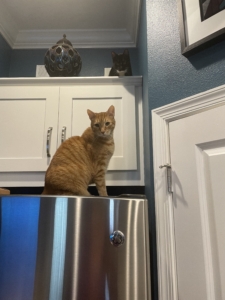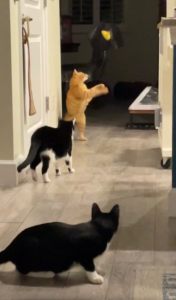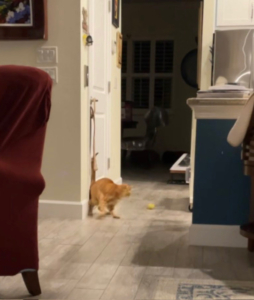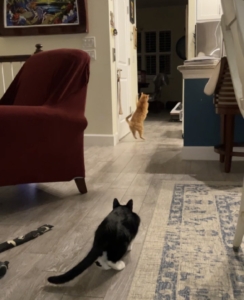Commitment to Care: Pekoe

Feline Osteoarthritis (OA) is a degenerative condition characterized by structural changes in your cat’s joint components, including cartilage, joint capsule, and surrounding bone. It can arise from inherent joint issues and the cumulative effects of everyday activities. Identifying the primary cause of OA in cats can be challenging, as the disease is less recognized compared to its prevalence in dogs.
The most commonly affected joints in cats with OA are the hip, stifle (knee), tarsus (ankle), and elbow. Clinical symptoms of OA are more commonly observed in older cats. While the condition is often underdiagnosed in veterinary medicine, there has been an increasing awareness of it in recent years, leading to more frequent diagnoses and improved care for our feline companions.


Pekoe, a 15-year-old, Orange domestic short hair, was diagnosed with OA in December of 2022. His condition came to light when he fell off the counter and began limping, prompting his owner to promptly seek veterinary care from Dr. Wallen. Radiographs were performed to rule out fractures, and laboratory tests revealed no abnormalities. Pekoe exhibited muscle atrophy in both rear legs and over the lumbar spine/hips. During the consultation with Dr. Wallen, Pekoe’s owner mentioned that he has been avoiding jumping onto furniture and using his claws to climb up, as well as displaying annoyance toward a new kitten introduced to the household. These changes in behavior, which were not typical for Pekoe, were initially attributed to aging. However, Dr. Wallen recommended considering Solensia as a treatment option for Pekoe.
Solensia is a monthly subcutaneous injection designed to alleviate pain associated with OA in cats, allowing them to regain mobility and improve their overall well-being. It functions by working with the cat’s naturally produced antibodies to reduce pain signals. By administering Solensia, Pekoe’s quality of life, comfort, and overall well-being has been enhanced. Following his third injection, Pekoe’s owner noticed him once again jumping on to furniture, running around the house, and engaging in play with the new kitten. Moreover, he exhibited increased interaction with his family and displayed more affectionate behavior, as the elimination of pain improved his disposition.

If you observe signs of your cat slowing down, hiding, or displaying changes in behavior, it is important to consult your veterinarian to discuss these changes. Solutions are available, as we are committed to preserving the strong bond between humans and their animal companions. Our cats are not just pets; they are cherished members of our families.
